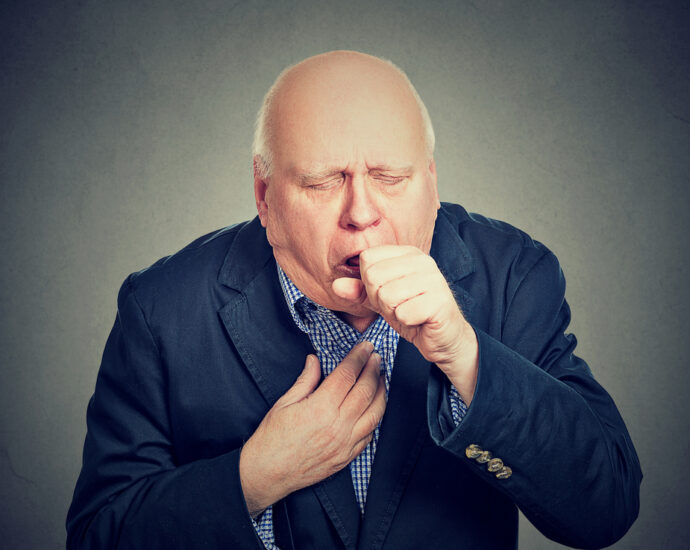Walking pneumonia, also known as atypical pneumonia, is a milder form of pneumonia that is less severe than its traditional counterpart. Unlike more severe cases of pneumonia that can require hospitalization, walking pneumonia often allows individuals to maintain their daily routines—hence the term “walking.” While it’s generally not life-threatening, understanding walking pneumonia is crucial to recognize symptoms, seek timely treatment, and prevent its spread to others.
Page Contents
What Is Walking Pneumonia?
Walking pneumonia is a respiratory infection that affects the lungs. It is caused by various types of bacteria, viruses, or other microorganisms, with Mycoplasma pneumoniae being the most common bacterial culprit. Unlike typical pneumonia, walking pneumonia symptoms develop more gradually and are often less intense. However, the infection can still cause discomfort and disrupt daily activities.
Symptoms of Walking Pneumonia
The symptoms of walking pneumonia are typically milder than those of traditional pneumonia but can still interfere with normal functioning. Common symptoms include:
- Persistent dry cough that may worsen at night
- Fatigue and general malaise
- Low-grade fever
- Chills
- Headache
- Sore throat
- Chest pain or discomfort, especially when coughing
- Mild shortness of breath
- Nasal congestion or runny nose in some cases
These symptoms can last for weeks if not treated and may be mistaken for a common cold or bronchitis due to their subtle onset.
Causes of Walking Pneumonia
Walking pneumonia can be caused by different pathogens, including:
- Mycoplasma pneumoniae: The leading cause, especially in school-aged children and young adults.
- Chlamydophila pneumoniae: Another bacterial agent that commonly causes respiratory infections.
- Viruses: Some cases of walking pneumonia are due to viral infections, such as the flu or respiratory syncytial virus (RSV).
- Legionella pneumophila: This bacterium causes Legionnaires’ disease, a more severe form of atypical pneumonia, but mild cases may resemble walking pneumonia.
Walking pneumonia is contagious and can spread through respiratory droplets when an infected person coughs or sneezes. Close contact in crowded environments such as schools, dormitories, or workplaces increases the risk of transmission.
Diagnosis of Walking Pneumonia
Diagnosing walking pneumonia can be challenging because its symptoms often mimic those of other respiratory conditions. A healthcare provider may:
- Perform a physical examination and listen for abnormal lung sounds using a stethoscope.
- Review the patient’s medical history and symptoms.
- Order a chest X-ray to distinguish pneumonia from other respiratory conditions.
- Conduct blood tests or sputum cultures to identify the specific pathogen causing the infection.
In some cases, a nasopharyngeal swab may be used to detect viral or bacterial agents.
Treatment Options
Treatment for walking pneumonia depends on its cause and severity. Common approaches include:
- Antibiotics: If walking pneumonia is caused by bacteria such as Mycoplasma pneumoniae, antibiotics like azithromycin, doxycycline, or a fluoroquinolone may be prescribed.
- Symptom Management: Over-the-counter medications such as acetaminophen or ibuprofen can reduce fever and alleviate pain.
- Hydration and Rest: Drinking plenty of fluids and getting adequate rest help the body recover more quickly.
- Cough Suppressants: These may be recommended to manage a persistent cough, though they should be used sparingly to avoid suppressing productive coughs.
Most individuals recover within one to two weeks with appropriate treatment, but symptoms like fatigue and cough may linger for a few weeks longer.
Prevention of Walking Pneumonia
Preventing walking pneumonia involves measures to reduce exposure to pathogens and strengthen the immune system. Key strategies include:
- Good Hygiene: Wash hands frequently with soap and water, especially after coughing, sneezing, or touching public surfaces.
- Cough Etiquette: Cover your mouth and nose with a tissue or your elbow when coughing or sneezing.
- Avoid Close Contact: Minimize close interaction with individuals who have respiratory infections.
- Vaccination: Stay up to date on vaccines, such as the influenza vaccine, which can prevent viral infections that lead to pneumonia.
- Healthy Lifestyle: Maintain a balanced diet, exercise regularly, get adequate sleep, and avoid smoking, as these factors support respiratory health and immunity.
Who Is at Risk?
Walking pneumonia can affect anyone, but certain groups are more susceptible, including:
- Children and Adolescents: Particularly those in school or daycare settings.
- Young Adults: Especially those living in dormitories or crowded living arrangements.
- Older Adults: Aging immune systems may make recovery slower.
- Individuals with Chronic Illnesses: People with asthma, diabetes, or other chronic conditions may experience more severe symptoms.
- Immunocompromised Individuals: Those undergoing chemotherapy, organ transplants, or living with conditions like HIV/AIDS are at greater risk.
Complications of Walking Pneumonia
Although walking pneumonia is usually mild, complications can occur, particularly in vulnerable populations. Potential complications include:
- Worsening of Chronic Conditions: For example, asthma or COPD symptoms may flare up.
- Severe Pneumonia: In rare cases, the infection may progress to a more severe form of pneumonia.
- Ear Infections: These may develop if bacteria spread to the middle ear.
- Hospitalization: Required in rare cases where symptoms become severe or complications arise.
When to Seek Medical Attention
While walking pneumonia can often be managed at home, medical attention should be sought if:
- Symptoms worsen or fail to improve after a week.
- Breathing becomes difficult or labored.
- High fever persists despite treatment.
- Chest pain intensifies or becomes more frequent.
- Symptoms of dehydration, such as reduced urination or extreme fatigue, are present.
Conclusion
Walking pneumonia is a milder form of pneumonia that often allows individuals to continue their daily activities. Despite its less severe nature, it can still cause discomfort and disrupt routines if not treated. Recognizing the symptoms, seeking appropriate medical care, and taking preventive measures can help manage and reduce the risk of walking pneumonia. By staying informed and proactive, individuals can protect their respiratory health and minimize the impact of this common infection.
READ MORE: Flu Prevention Tips
Sources:
https://my.clevelandclinic.org/health/diseases/15744-pneumonia-atypical-walking-pneumonia
https://kidshealth.org/en/parents/walking-pneumonia.html
https://www.lung.org/blog/what-is-walking-pneumonia
